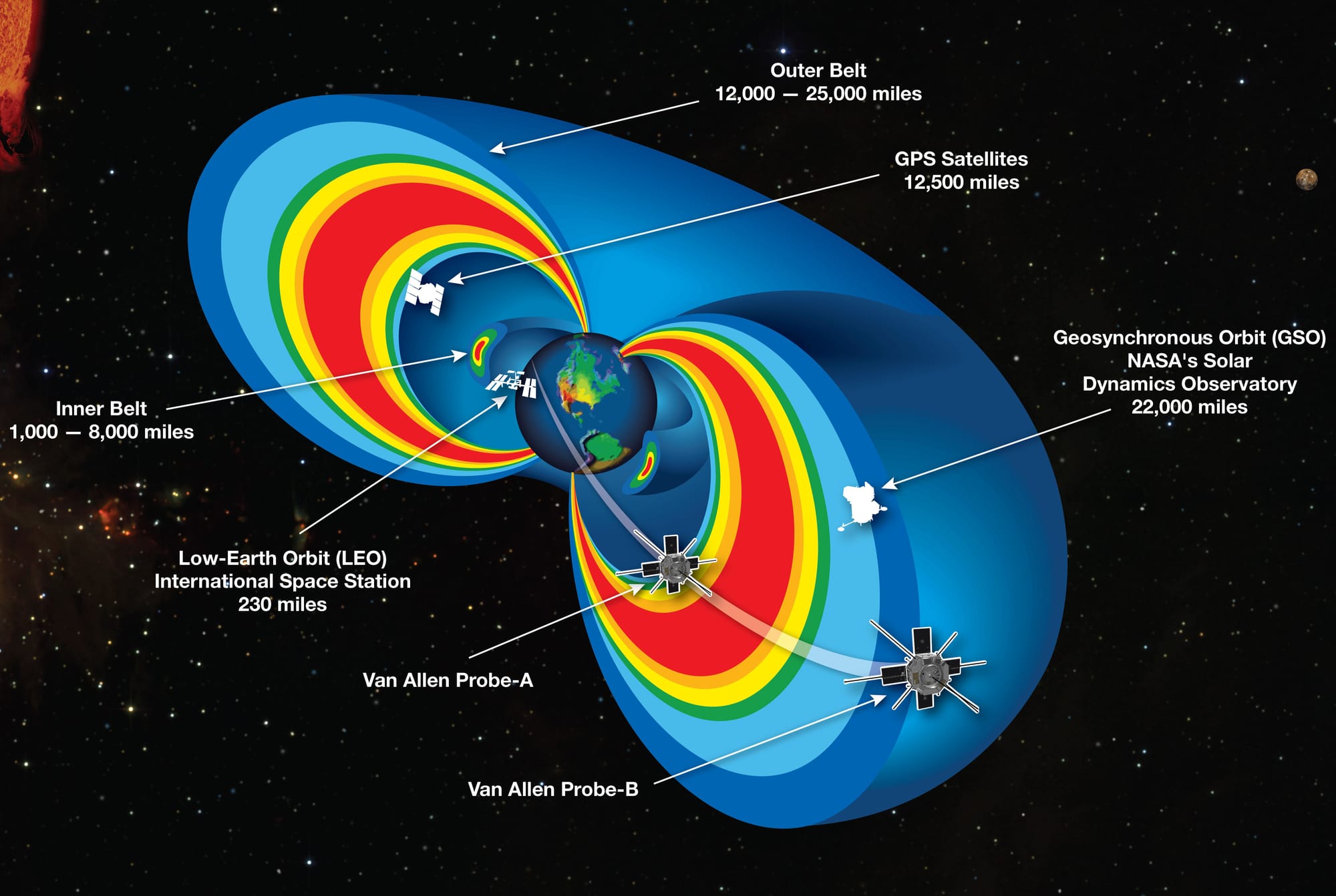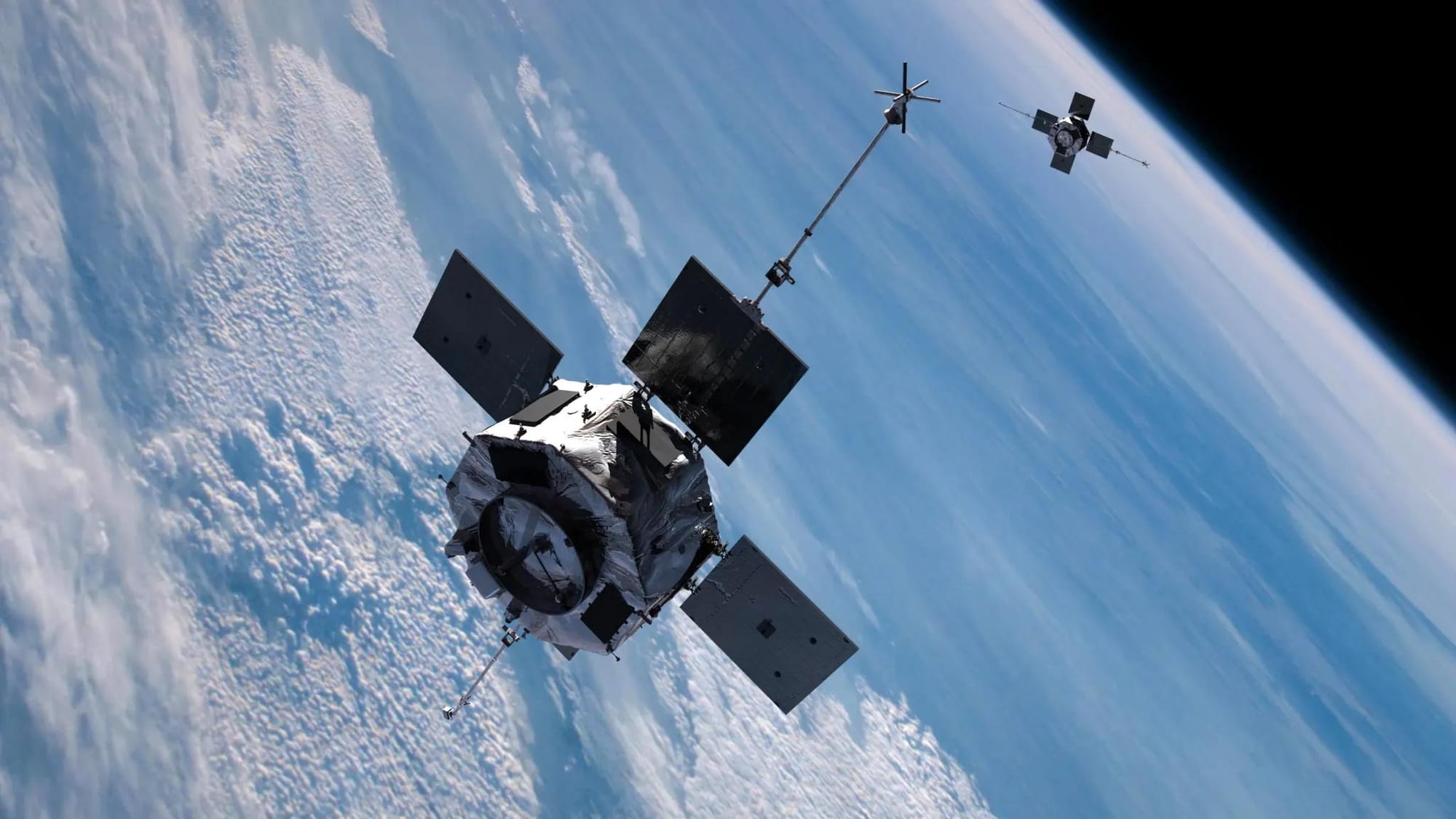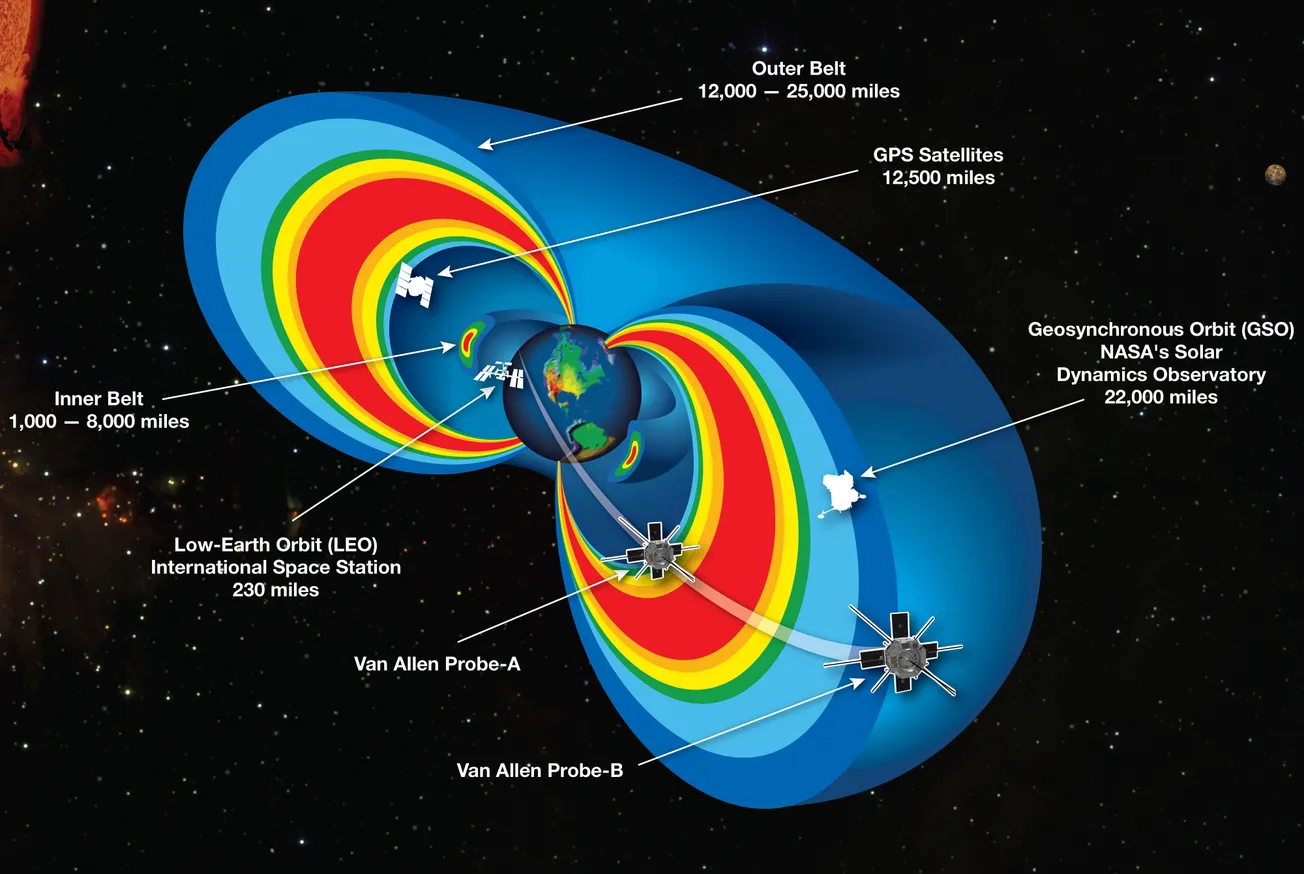“Science is a collaborative effort, and we are all part of a larger community of explorers.”
—Dr. James A. Van Allen
The successful launch by the Soviet Union on October 4, 1957 of the first artificial satellite into orbit around the Earth, Sputnik (“fellow traveler”), opened the Space Age; 2023 was the 65th anniversary of the launching of the first rocket into orbit by the United States, Explorer 1, in 1958. But it was in the years immediately after World War II that mankind began to experiment with various types of rocketry.
It is important to bear in mind the historical context of these experiments—the aftermath of the bombings of Hiroshima and Nagasaki, demonstrating the power and danger of nuclear bombs and radiation; and increasing tensions between the U.S. and the Soviet Union, as well as other world conflicts.
What Are the Van Allen Belts?
The Van Allen Belts, named after their discoverer, James Van Allen, are zones of energetic charged particles, most of which originate from the solar wind, which have been captured by and are held in place by the Earth’s magnetic field (the magnetosphere), taking the form of a torus (a donut or tire shape) around the Earth. These belts extend from about 965 km to over 21,100 km above the Earth. One can get a sense of Earth’s magnetic fields by looking at the Aurora Borealis, which is the result of collisions of electrically charged particles released from the Sun with gases in Earth’s atmosphere, and which travel along the field lines of the magnetic poles.
Similarly, the Belts are oriented along the lines to Earth’s magnetic field—broader at the equatorial level and bending in at a low angle around the polar regions. (Figures 1 and 3) All planets with magnetic fields have such radiation belts, which necessitates any spacecraft travelling to them to be properly shielded. Mars has no magnetic field (except sporadic surface fields), and therefore no radiation belts.

Earth actually has two Van Allen Belts. The smaller (inner) belt, with more intense radiation, is roughly 965–5,900 km, and the larger (outer) belt 14,800–25,100 km above Earth, that can sometimes extend out more than 25,100 km. Particles in the Van Allen Belts can accelerate to nearly the speed of light, producing ionizing radiation as they strike objects in their paths.
Many satellites travel through the inner belt during their orbits around Earth, and can be turned off when a coronal mass ejection (CME) is expected to impact the Belts. The International Space Station (ISS) is situated well below the inner belt, and GPS satellites usually operate in the gap between the two Belts. During manned space travel outside of Earth’s environs, such as to the Moon, spacecraft have followed a trajectory with the least amount of magnetic and radiative activity, such as toward the poles; Apollo 11 traveled this trajectory at about 25,000 km/h and spent less than an hour in the Belts, with minimal exposure for the astronauts inside.
Remarkable Discoveries of the Van Allen Probes
The Van Allen Probes (“Probes”) were launched in 2012 as part of a mission to further explore the Van Allen Belts; the mission was intended to last two years, but was extended to October 2019, at which time the Probes were decommissioned. The Probes were powered primarily by their solar arrays, but used onboard fuel for maneuvers. At a certain point the mission team decided to start operations to begin changing their orbits (while they still had power), so they will eventually come close to Earth and burn up in the atmosphere sometime over the next ten years. As they descend, they will continue to collect and transmit data.
Two characteristics of this mission made it stand out from all previous missions to study the Belts. First, relying on two identical spacecraft instead of one—the probes weren’t in exactly the same orbit, so they would tail or lap each other—meant that when the Probes took simultaneous measurements, from different locations, of the same event, they could determine whether an event occurred at the same time throughout the Belts, or instead traveled across the Belts, changing over space and time. Second, the instrument suite was unusually comprehensive, able to measure an enormous range of energies, particles, and waves. (Figure 2)
The two Probes flew in highly elliptical orbits, carrying identical instruments, sometimes coming as close as 600 km and going as far away as 32,000 km from Earth. This brought them through the greater portion of the Belts repeatedly, including the areas with the most intense radiation.

The instruments onboard included the Radiation Belt Storm Probes Ion Composition Experiment (RBSPICE), which focused on analysis of the ring current, which is an electric current circling Earth at the equator; and several other instruments which measured the types of particles in the lower, middle and higher ranges of energies and speed, and the causes of electromagnetic waves and particle acceleration and behavior. Descriptions may be found here.
What the Probes discovered about the Belts was nothing short of astonishing. Far from being “well-defined” and static, the Belts can disappear, only to replenish a few hours later. The dynamics within the Belts change throughout the 11-year solar cycle; it was previously thought that these dynamics were a result of interactions of three or four physical mechanisms, but now, they’ve discovered new physical processes that produce radiation particles on the time scale of minutes and even seconds, rather than hours and days
The dynamics of the Belts have opened new questions regarding fundamental scientific principles. Dr. Sasha Ukhorskiy, Van Allen Probes project scientist at Johns Hopkins University Applied Physics Laboratory (JHU APL), which also designed and built the spacecraft, described these:
The Van Allen Probes rewrote the textbook on radiation belt physics. The spacecraft used uniquely capable instruments to unveil radiation belt features that were all but invisible to previous sensors, and discovered many new physical mechanisms of radiation belt acceleration and loss.
The radiation detectors were turned on a month before launch; this allowed them to overlap what they were detecting on Earth with what they detected in space.
In 2013, a major coronal mass ejection (CME) occurred, barreling towards Earth at around 1,609, 000 km/h. It crashed into our magnetosphere like a solar tsunami; the magnetosphere was deformed as it was buffeted by the pressure, and the Van Allen Belts also responded—by forming a third belt! (Figure 3)

This confounded the scientists—it had never been observed before, and was not predicted by any computer model. Not only did it form—researchers thought it would merge with one of the other belts—but, remarkably, it remained stable for around four weeks. This represented a fundamental, new discovery; an event demonstrating new physical principles. Since the dynamics of the Belts have been so volatile, the research team doesn’t yet know why the third belt was able to remain stable and distinct for so long.








